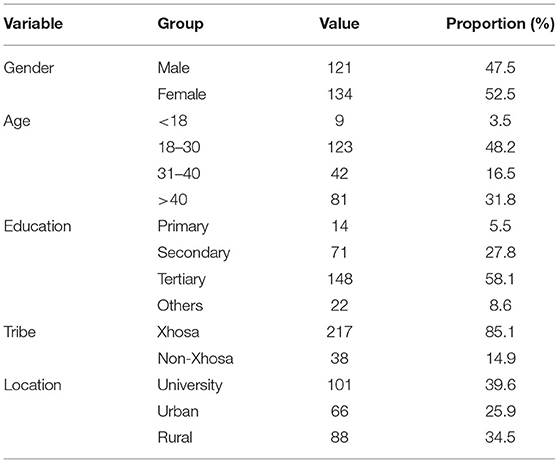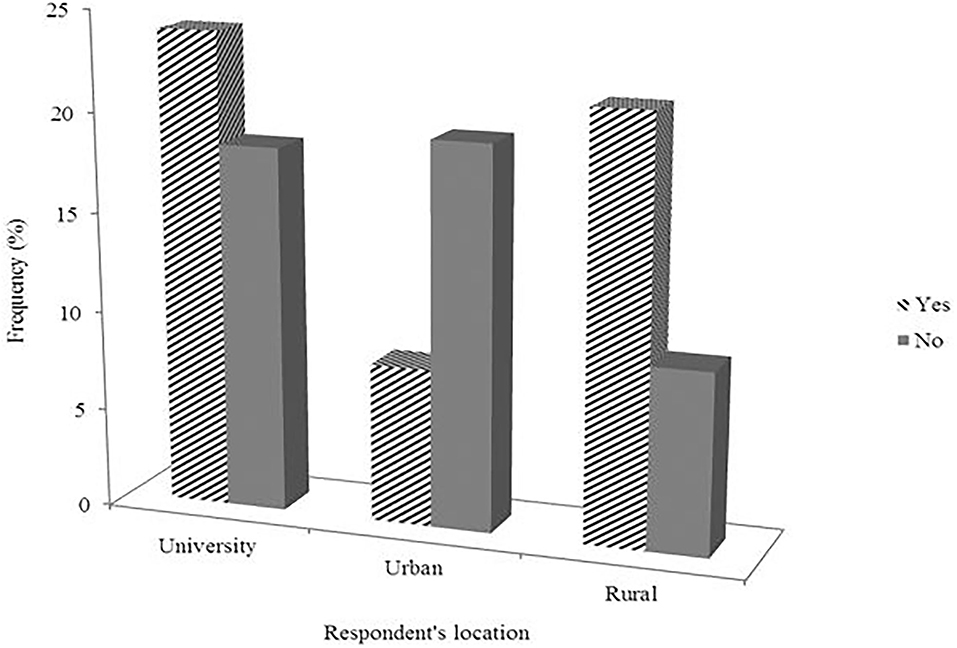- 1Department of Animal Science, Adekunle Ajasin University, Akungba-Akoko, Nigeria
- 2Small-Scale Agribusiness and Rural Non-farm Enterprise, Niche Area, Walter Sisulu University, Mthatha, South Africa
- 3Faculty of Commerce and Administration, Department of Economics and Business Sciences, Walter Sisulu University, Mthatha, South Africa
The creation and growing popularity of cultured meat has raised mixed reactions among consumers about its originality, acceptability, edibility, and nutritional quality across the world. The perception and reaction of consumers to novel meat are influenced by a variety of factors, such as geographical location, media coverage, educational status, culture, and religion. Therefore, this study was designed to examine the perceptions of consumers on the consumption of natural vs. cultured beef in the Eastern Cape Province, South Africa. A total of 255 respondents were interviewed using structured questionnaires, and the data were analyzed using descriptive statistics and X2 tests. Interviewees included representatives from University (educated), urban (literate), and rural (semi-literate) communities. The results revealed the majority (63%) of the respondents had not heard about the concept of cultured beef production, of which 27% of them were men and 36% were women. More than half (53%) of the respondents indicated their willingness to eat cultured beef if offered to them after explaining the concept and process of making cultured beef to them. Among all factors that were analyzed, the participant level of education was found to significantly influence their willingness to eat cultured beef when available commercially. It is therefore concluded that the majority of consumers in this study supported the concept of cultured meat as an alternative way to complement conventional meat production and would be willing to eat it when provided.
Introduction
The geometric rise in meat consumption across the world over the past few years has been phenomenal. Presently, worldwide average meat consumption is estimated at 42.9 kg per capita, with industrial countries consuming about 76.1 kg, two times the quantity in developing countries (33.6 kg) (FAO, 2014; WWF Report, 2016). However, it has been indicated that the consumption of meat and meat products will double by 2050, and beef consumption will increase by 200% in developing countries (FAO, 2011; Chriki and Hocquette, 2020). This increase could be attributed to several reasons, including (a) the processing of meat into ready-to-eat products (such as, sausage, polonies, and patties), (b) the application of innovative technologies to increase production and improve qualities, such as tenderness, leanness (fat content), palatability, freshness, shelf life, and safety, (c) awareness on its inherent essential micronutrients, such as iron, zinc, calcium, vitamin A, vitamin B1, and other bioactive compounds (Datar and Betti, 2010). Beyond this, the shift toward high meat consumption has been attributed to an increase in income and the human population, which has been forecast to reach 9 billion in 2050 (Nellemann et al., 2009; Alexandratos and Bruinsma, 2012; OECD-FAO, 2021). As the world becomes more developed and prosperous, the global consumption of meat (such as, beef) will continue to rise enormously in the coming decades (van der Weele and Tramper, 2014; OECD-FAO, 2021).
As a consequence, satisfying the demand for meat without an alternative means of meat production will be a great challenge (Post, 2012; Goodwin and Shoulders, 2013). Innovation and productivity improvements alone in conventional beef production may not be enough to mitigate these challenges. Any further attempt to engender intensive (mass-scale) meat production may cause more harmful effects on the environment, public health, and the global economy (Smil, 2014). Similarly, commitment to vegetarianism or a meatless diet (meatless Monday) will not fundamentally affect future demand for meat (Smil, 2014). Therefore, the production of alternative meat sources, such as cultured meat among others is seen as a hopeful option to complement conventional beef production (Tuomisto, 2010; Zaraska, 2013; Chriki and Hocquette, 2020). In vitro meat, also known as “cultured or clean meat” is meat produced without slaughtering the animal from embryonic stem cells or adult stem cells (Post, 2012; Post et al., 2020; Newton and Blaustein-Rejto, 2021). Given the appropriate technology has been fully developed, cultured meat could be seen as an option to diminish the increasing problems associated with meat production, such as greenhouse emissions, animal welfare (suffering caused by intensive farming), the mass slaughter of animals, and health claims (Chiles, 2013; Hocquette et al., 2015; Newton and Blaustein-Rejto, 2021).
Moreover, the creation of cultured meat has raised mixed reactions among consumers about its originality, edibility, and nutritional quality. However, it is worth noting that the world's first cultured beef burger was launched on 5 August 2013 for sensory evaluation in London (Riverside TV studios) in front of a live audience and was streamed internationally for an interested individual to gain familiarity with the technology (Zaraska, 2013; O'Riordan et al., 2017). Yet some consumers are skeptical about the suitability of the meat. Verbeke et al. (2015) in a survey study conducted in Belgium, Portugal, and the United Kingdom revealed that most participants were disgusted when they first heard about the cultured meat, while others thought it was ridiculous and completely unnatural. In the United States, Wilks and Phillips (2017) revealed in an online survey study that one-third of the respondents showed a willingness to eat cultured meat regularly or as a replacement for farmed meat when provided. In another study involving an analysis of 34 United States and European Union newspapers, Goodwin and Shoulders (2013) found a statement indicating that if cultured meat feels and tastes similar to meat, people will buy it. Laestadius and Caldwell (2015) observed the comment of consumers in an online newspaper survey and found that the majority described cultured meat as an unnatural and unappealing food. However, in Africa, limited or no information is available on the knowledge and reaction of consumers to cultured meat.
Presently, cultured meat is yet to be commercially available. However, some researchers are convinced and optimistic that its production will reduce the meat industry's environmental footprint, while others have criticized its potential or advantages (Hocquette et al., 2015; Newton and Blaustein-Rejto, 2021). It is expected that factors, such as media information, culture, religious belief, public involvement, affluence, age, level of education, health-related issues, and trust in science and technology could influence the perception and reaction of consumers to food products (Chiles, 2013; Fayemi and Muchenje, 2014; Font-i-Furnols and Guerrero, 2014; Verbeke et al., 2015). To some extent, craving for originality, nutritional quality, and healthiness can also determine consumer perceptions and acceptance of cultured meat (Guerrero et al., 2013).
Therefore, the objective of this study was to investigate the perceptions of meat consumers regarding the potential and willingness to eat cultured beef (in vitro meat production) in the Eastern Cape Province, South Africa.
Materials and Methods
Study Site and Sampling
The study was conducted in the Eastern Cape Province of South Africa. The Eastern Cape is the second largest province in the country covering approximately 169,580 km2 (13.9%) of the total land area of South Africa. The province is located on the east coast of South Africa with an average population of 6.62 million people constituting about 12.5% of the country's population. The province is largely dominated by blacks, of whom 78% are Xhosa-speaking. The Eastern Cape is regarded as the home of livestock, having the highest number of beef cattle production in the country (DAFF, 2013). The chosen municipalities in the province for this study include Nkonkobe (Alice and Dimbaza), Buffalo city (Mdantsane and KingWilliams town), and Alfred-Nzo (Mount Frere and Mount Ayliff). According to their geographical location, the three municipalities were further stratified into three groups to include University (Alice), urban (Mdantsane and KingWilliams town), and rural (Dimbaza, Mount Frere, and Mount Ayliff) communities. The stratification of the municipalities in this study supports the widely-held view that consumer perception varies according to geographical location (Dindyal and Dindyal, 2003). The total population of the people living in the study area selected for this study is < 2 million. With the use of the Raosoft calculator, and the confidence level set at 95% (with the confidence interval at 5%), the total expected sample size is 384 participants.
Data Collection
The data used in the present study were obtained from 255 respondents. This was so because of some constraints, such as scarce resources, the inability of respondents to properly answer the questionnaires, and the lack of willingness of some respondents to partake in the study. Of the 255 respondents, 101 participants were selected from the university community, 66 from the urban community, and 88 from the rural community. Meanwhile, the larger the population of a given area does not necessarily increase the sample size of the area (Krejcie and Morgan, 1970). A snowball sampling technique was used to collect the data. We aimed to get representation from a wide variety of perspectives, and interviewees were selected from universities (those that have unlimited access to information, especially through social media, such as the internet), urban (those that are literate) and rural (those that are semi-literate) communities. Questionnaires (with closed-ended questions) were administered through personal contact in the respondent's residence. Those respondents that do not fill their questionnaire properly and completely from all the categories were also excluded from the analysis. The respondents provided information on demographic characteristics (such as, age group, gender, and education), perception on the consumption of beef, possible reasons of not eating beef, and knowledge and willingness to eat cultured meat (in vitro production), if provided. Some of the questions asked about the consumption of beef include (i) do you eat meat from cattle, (ii) how often do you eat meat from cattle, (iii) what are the factors influencing the choice/purchase of beef, and (iv) possible reasons why you do not eat beef. While questions asked on knowledge and willingness to eat cultured meat include (i) have you heard about or aware of the production of in vitro meat, (ii) do you agree that the production of in vitro meat/beef is important for enhancing food security, (iii) will you like to eat in vitro meat/beef if provided, and if no, give a reason. Before data collection, a group of experienced field workers that could effectively communicate with the respondents in vernacular (Xhosa) and English Language were recruited to administer the questionnaires. Each member of the group was trained on how to administer the questionnaire correctly and also describe the cultured meat for easy understanding of the respondent. The primary term used to describe the “cultured meat” includes meat grown in the laboratory from the adult cells of an animal.
Statistical Analysis
Data were analyzed using the Frequency procedure (PROC FREQ) and the chi-square procedures (PROC CHISQ) of the Statistical Analysis System (SAS, version 1.9.3 of 2007). PROC FREQ was computed based on the age groups, gender classes, tribes, locations, and levels of education of the respondents. PROC CHISQ was used to determine the association between demographic characteristics of the respondents and their perceptions of the production and consumption of in vitro cultured beef.
Results and Discussion
Consumer Distribution and Socio-Demographic Characteristics
Results on participant's distribution according to locations showed that the university community had the highest proportion of respondents (39.6%), followed by urban (34.5%) and rural (25.9%) dwellers, respectively (Table 1). Regarding the socio-demographic characteristics of the respondents, 47.5% were men and 52.5% were women. Nearly 50% of the respondents were aged between 18 and 30 years, while other respondents were within the age categories of 18 years or below (3.5%), 31–40 years (16.5%), and 41 years or above (31.8%). The majority of the respondents (85.1%) were Xhosa-speaking people while the rest were non-Xhosa. More than half of the respondents (58.1%) had obtained tertiary education, while 27.8 and 5.5% had only primary and secondary education respectively. Only 8.6% of the respondents had no formal school education (other).
Consumers' Perceptions of Beef Quality and Consumption in Eastern Cape Province
The results of the deposition of respondents to beef consumption are shown on Figure 1. The majority of the respondents (89%) were beef eaters while 11% do not eat beef based on various reasons. Of the 89% of respondents that were beef consumers, 44.5% were men and women. In addition, out of the non-beef consumers, 1% claimed to be vegetarians, 5% linked their decision to an allergic reaction, and the remaining 5% attributed their reason to cultural beliefs and personal preferences. A similar result on beef consumption among consumers has been reported in Ghana, Tanzania, and Nigeria (Nandonde et al., 2013; Osei-Asare and Eghan, 2014; Okoronkwo et al., 2020). Preference for beef could be attributed to its role as the first-choice meat for social, religious, and cultural functions in the Eastern Cape and other parts of Africa. This preference for beef is not limited to a province in South Africa but has been reported as the highest consumed meat type in Africa (Guerrero et al., 2013; FAOSTAT, 2014). On the other hand, our results further agree with the findings of Smil (2014), who reported that < 4% of Western society populations are vegetarians (non-meat eaters). The proportion of participants that indicated allergic reactions after eating beef in this study is in line with the reports of Sampson (2004) and Hong and Vogel (2010), who found that food allergies, such as meat, only affect < 4% of the adult population in the United States. However, different symptoms, such as itching, skin rash, headache, coughing, and throat swelling were reported by the respondents as a consequence of allergic reactions after eating beef and other red meat products. Saleh et al. (2012) reported that allergic reactions are caused by the presence of alpha-gal (oligosaccharide) in beef and other red meat. Following the consumption of beef, the alpha-gal activates T helper 2 (Th2) and causes induction of interleukins, leading to the formation of IgE antibodies by B cells and this, in turn, culminates in mast cell activation, eosinophilia, and hypersensitivity reactions in predisposed individuals. In contrast, Alexander and Cushing (2011) and reported that the association of beef consumption to health risks may be confounded or modified by other dietary factors (such as, high intake of refined sugars and alcohol, or low intake of fruits and vegetables) and/or behavioral factors (low physical activity and smoking) rather than the consumption of beef and other red meat. Conversely, there has been no concrete/conclusive evidence that moderate consumption of beef has negative health effects on consumers (Van Wezemae et al., 2010; Wyness et al., 2011). The result on factors influencing the purchase of beef clearly showed that freshness/color and price were the most quality dictators when purchasing beef market (Figure 2). Very few consumers purchase beef in relation to its source or fat content. The results from the present study agree with those obtained by Robbins et al. (2003), McCarthy and Henson (2004), Jocumsen (2005), and Predanocyová et al. (2019), who found freshness, color, and price as most important factors dictating the purchase of meat in shop and butcheries.
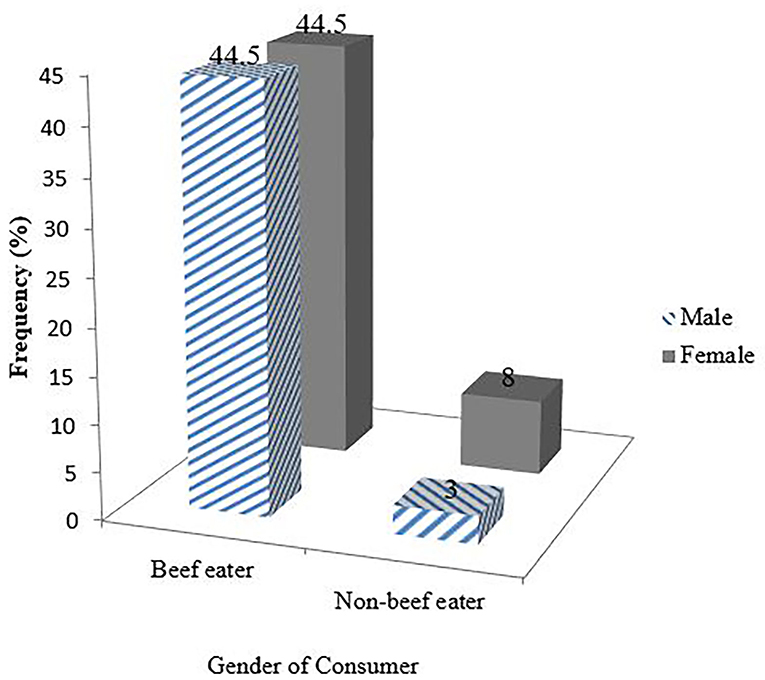
Figure 1. Effect of gender on consumption of conventional beef in the Eastern Cape province of South Africa.
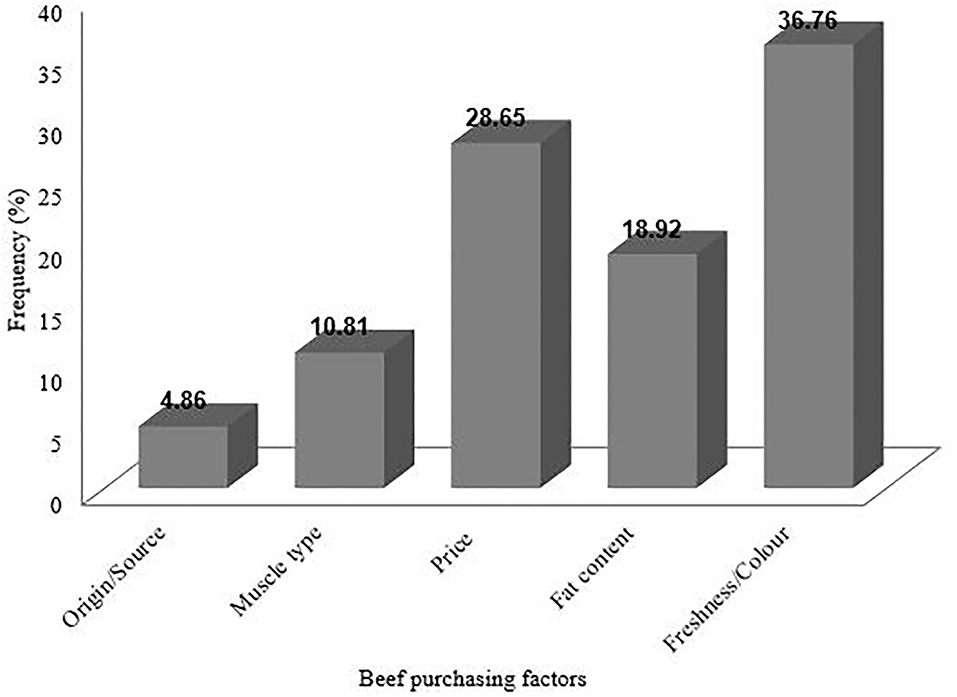
Figure 2. Factors influencing the purchase of beef for consumption in the Eastern Cape province of South Africa.
Consumers' Perception Toward Their Knowledge of Cultured “in vitro” Beef Production
As presented in Table 2, the result revealed that 63% of the respondents (26.7% male and 36.1% female) have not heard about the idea of cultured beef production (p < 0.05). Most respondents living in the university community were found to be more conversant with the idea of cultured beef than those from urban and rural areas (p < 0.01). These could be attributed to a number of factors, such as inadequate media publicity and access to current information on innovative products. Although, Goodwin and Shoulders (2013) reported that consumer awareness and information/media coverage on cultured meat are still in their infancy. Therefore, a proactive communication scheme for the production of in vitro cultured beef would be necessary to create more awareness on the importance for future benefits. This in turn could allow the agricultural industry to have greater influence in shaping consumers' perceptions on its production (Goodwin and Shoulders, 2013; Bryant, 2020).
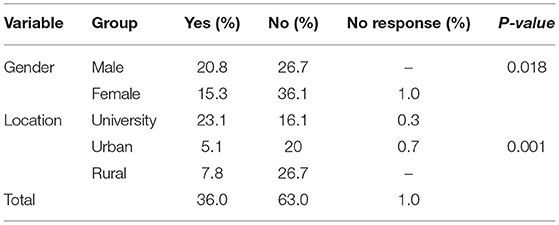
Table 2. Consumer awareness on cultured beef production in Eastern Cape Province of South Africa (n = 255).
After explaining the concept and production of cultured beef (in vitro production), 53.1% of the respondents endorsed the production of cultured beef and indicated their interest to eat cultured beef if offered to them (Figure 3). Out of the 53.1% of the respondents that were interested in eating cultured beef, 29.3% were men and 23.9% were women (p < 0.05). In addition, a greater proportion of the consumers that showed interest in the consumption of cultured beef resided in university and rural community (Figure 4). This finding is consistent with the findings of Bryant et al. (2019), who reported that 64.6% of their respondents in their study are willing to eat cultured meat when available. Goodwin and Shoulders (2013) also found in their study that “If cultured beef tastes like conventional meat, and is available in the supermarket people will buy it.” However, there were some consumers who expressed doubt and fear about the originality, taste, healthiness, and edibility of cultured beef if provided. In particular, most respondents from the urban community mentioned that the concept of cultured meat is ridiculous and seem unnatural. Hocquette et al. (2015) and Chriki and Hocquette (2020) in their study have shown that some consumers would not accept cultured beef if offered to them because they perceived it is unnatural. In reality, it is natural that some people could be afraid of eating food that they have never tasted before. Moreover, the credibility of cultured beef has been ascertained after a sensory evaluation was conducted in London in August 2013. The panelist reported that the ham- burger cultured beef tasted juicy, delicious, and comparable to conventional beef (Zaraska, 2013). Furthermore, evidence has shown that a majority of people will support the production of cultured meat if it is healthy and safe (Haagsman et al., 2009; Goodwin and Shoulders, 2013), such as vegetarians and environmentalists, since its production will eliminate any cruel or suffering associated with factory farmed animals (Schaefer and Savulescu, 2014). In addition, other researchers have shown that the production of cultured beef will improve the biochemical composition of meat and reduce public concern about animal welfare, greenhouse emissions, foodborne disease, and biodiversity loss (Edelman et al., 2005; Datar and Betti, 2010; Canon, 2011; Goffman, 2012; Chriki and Hocquette, 2020). Furthermore, the willingness displayed by some of the respondents to eat cultured beef when commercially available also gave them the assurance that its production would enhance meat production.
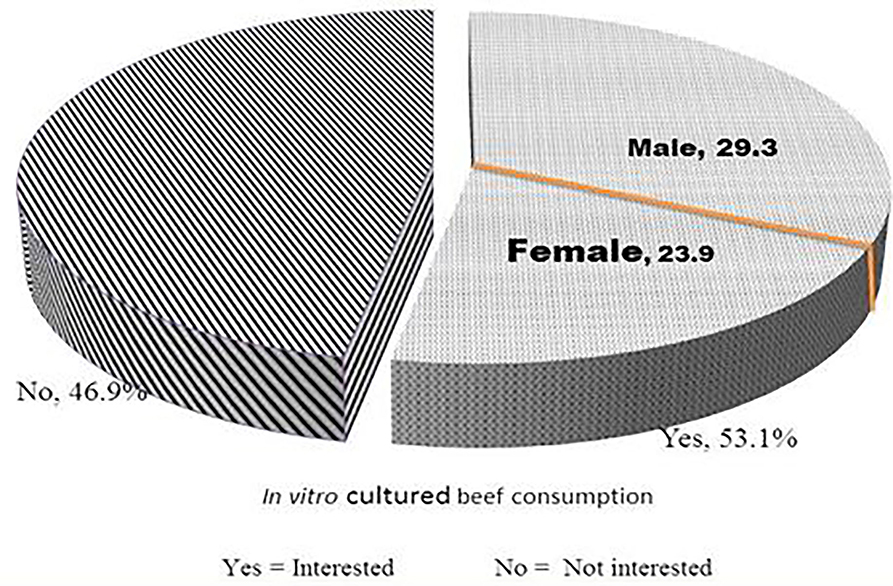
Figure 3. Consumers interest in the consumption of cultured beef in Eastern Cape Province of South Africa.
In Table 3, consumers' willingness to eat cultured beef was observed to be strongly influenced by their educational status among other demographic factors. This probably suggests the need for more proactive orientation to create more awareness on the importance of cultured meat to meat production across the world and especially among people living in developing countries.
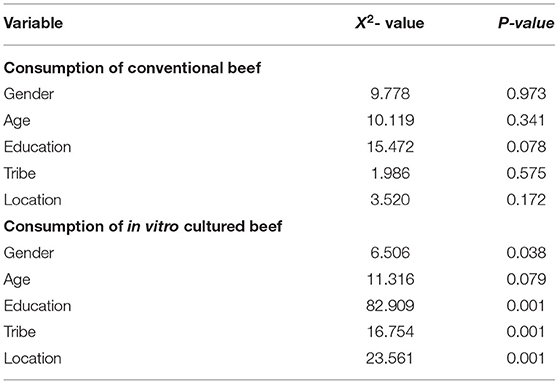
Table 3. Effect of demographic factor on consumption of beef in Eastern Cape Province of South Africa.
Conclusions
Findings from this present study revealed that beef is commonly consumed by the majority of people in the Eastern Cape Province of South Africa. Most of the consumers were willing to eat in vitro cultured beef if provided. The idea that people would purchase in vitro cultured beef does not seem overly implausible. Moreover, consistent information on the benefits, originality, and edibility of cultured meat should be communicated to the public at large to reinforce its production to enhance meat production. More people in the study area are now getting aware of the possibility of producing in vitro meat from the laboratory. The study has limitations that should be addressed in future research. The geographical limitation (i.e., the study was conducted in a province in South Africa) is the most noticeable. To our knowledge, this study is the first to examine the perception of meat consumers on the concept and production of cultured meat in Africa. Therefore, further research should also be conducted in other countries in Africa to obtain a broader view and perspective of consumers on the concept of cultured meat.
Data Availability Statement
The raw data supporting the conclusions of this article will be made available by the authors, without undue reservation.
Ethics Statement
Ethics review and approval/written informed consent was not required as per local legislation and institutional requirements.
Author Contributions
BF: conceptualization, data curation, analysis, and writing—original draft. BF and EI: visualization and manuscript editing. YH: logistics and supervision. EI: original writing. All authors contributed to the article and approved the submitted version.
Conflict of Interest
The authors declare that the research was conducted in the absence of any commercial or financial relationships that could be construed as a potential conflict of interest.
Publisher's Note
All claims expressed in this article are solely those of the authors and do not necessarily represent those of their affiliated organizations, or those of the publisher, the editors and the reviewers. Any product that may be evaluated in this article, or claim that may be made by its manufacturer, is not guaranteed or endorsed by the publisher.
References
Alexander, D. D., and Cushing, C. A. (2011). Red meat and colorectal cancer: a critical summary of prospective epidemiologic studies. Obes. Rev. 12, 472–493. doi: 10.1111/j.1467-789X.2010.00785.x
Alexandratos, N., and Bruinsma, J. (2012). World agriculture towards 2030/2050: The 2012 revision. Food and Agriculture Organization, Rome (FAO), 1–4. Available online at: www.fao.org/docrep/016/ap106e/ap106e.pdf (accessed May 15, 2017).
Bryant, C., Szejda, K., Parekh, N., Desphande, V., and Tse, B. (2019). A survey of consumer perceptions of plant-based and clean meat in the USA, India, and China. Front. Sustain. Food Syst. 3, 1–11. doi: 10.3389/fsufs.2019.00011
Bryant, C. J. (2020). Culture, meat, and cultured meat. J. Anim. Sci. 98, 172. doi: 10.1093/jas/skaa172
Canon, S. (2011). Meat from petri dish to plate: Credible or inedible? Chicago Tribune. Available online at: http://www.chicagotribune.com/ (accessed May 15, 2017).
Chiles, R. T. (2013). Intertwined ambiguities: meat, in vitro meat, and the ideological construction of the marketplace. J. Consum. Behav. 12, 472–482. doi: 10.1002/cb.1447
Chriki, S., and Hocquette, J. (2020). The myth of cultured meat: a review. Front. Nutr. 7, 1–9. doi: 10.3389/fnut.2020.00007
DAFF. (2013). Department of Agriculture, Forestry and Fisheries, South Africa (DAFF) 2013. Trends in the Agricultural Sector. Available online at: www.daff.gov.za/docs/statsinfo/Trends (accessed November 25, 2017).
Datar, I., and Betti, M. (2010). Possibilities for an in vitro meat production system. Innov. Food Sci. Emerg. Technol. 11, 13. doi: 10.1016/j.ifset.2009.10.007
Dindyal, S., and Dindyal, S. (2003). How personal factors, including culture and ethnicity, affect the choices and selection of food we make. Internet J. Third world Med. 1, 2. doi: 10.5580/2231
Edelman, P. D., McFarland, D. C., Mironov, V. A., and Matheny, J. G. (2005). In vitro cultured meat production. Tissue Engineering. 11, 659–662. doi: 10.1089/ten.2005.11.659
FAO. (2011). World livestock 2011. Livestock in food security, 76–80. Available online at: www.fao.org/docrep/014/i2373e/i2373e.pdf (accessed March, 2021).
FAO. (2014). Food outlook-Biannual report on global food markets, 1–8. Available online at: www.fao.org/docrep/019/i3751e/i3751e.pd (accessed June, 2021).
FAOSTAT. (2014). Food and Agriculture Organization of the United Nations. Available online at: http://faostat.fao.org/site/610/default.aspx#ancor (accessed December, 2020).
Fayemi, P. O., and Muchenje, V. (2014). Farmers' preference for mutton and lamb from natural velds in the Eastern Cape Province of South Africa. J. Food Agric. Environ. 12, 15–19. Available online at: http://world-food.net/farmers-preference-for-mutton-and-lamb-from-natural-velds-in-the-eastern-cape-province-of-south-africa/
Font-i-Furnols, M., and Guerrero, L. (2014). Consumer preference, behavior and perception about meat and meat products: an overview. Meat Sci. 98, 361–371. doi: 10.1016/j.meatsci.2014.06.025
Goffman, E. (2012). The Environmental Impact of Meat. ProQuest Discovery Guides. Available online at: http://www.csa.com/discoveryguides/discoveryguides-main.php (accessed January, 2021).
Goodwin, J. N., and Shoulders, W. C. (2013). The future of meat: a qualitative analysis of cultured meat media coverage. Meat Sci. 95, 445–450. doi: 10.1016/j.meatsci.2013.05.027
Guerrero, A., Valero, M. V., Campo, M. M., and Sanudo, C. (2013). Some factors that affect ruminant meat quality: from the farm to the fork review. Acta Scientiarum Animal Sciences. 35, 4. doi: 10.4025/actascianimsci.v35i4.21756
Haagsman, H., Hellingwerf, K., and Roelen, B. (2009). Production of animal proteins by cell systems. Desk study on cultured meat. Available online at: www.worldcat.org/.../production-of-animal-proteins-by-cell-systems (aaccessed May 15, 2017).
Hocquette, A., Lambert, C., Sinquin, C., Peterolff, L., Wagner, Z., Bonny, S. P., et al. (2015). Educated consumers don't believe artificial meat is the solution to the problems with the meat industry. J. Integr. Agric. 14, 273–284. doi: 10.1016/S2095-3119(14)60886-8
Hong, S., and Vogel, N. M. (2010). Food allergy and eosinophilic esophagitis: learning what to avoid. Clevel. Clin. J. Med. 77, 1. doi: 10.3949/ccjm.77a.09018
Jocumsen, A. (2005). Assessment of fresh beef quality by Australian consumers at the point of purchase. Consum. Behav. 109, 122–128. Available online at: http://smib.vuw.ac.nz:8081/WWW/ANZMAC2005/cd-site/authors1.html
Krejcie, R. V., and Morgan, D. W. (1970). Determining sample size for research activities. Educ. Psychol. Meas. 30, 607–610. doi: 10.1177/001316447003000308
Laestadius, L. I., and Caldwell, M. A. (2015). Is the future of meat palatable? Perceptions of in vitro meat as evidenced by online news comments. Public Health Nutr. 18, 2457–2467. doi: 10.1017/S1368980015000622
McCarthy, M., and Henson, S. (2004). Perceived risk and risk reduction strategies in the choice of beef by Irish consumers. Food Qual. Prefer. 16, 435–445. doi: 10.1016/j.foodqual.2004.08.003
Nandonde, S. W., Msuya, E., and Mtenga, L. A. (2013). Assessment of the influence of consumer characteristics on the choice of beef quality attributes in Tanzania: an experimental economic approach. Journal of Development and Agricultural Economics. 2, 111–119.
Nellemann, C., MacDevette, M., Manders, T., Eickhout, B., Svihus, B., Prins, A. G., and Kaltenborn, B. P. (2009). The environmental food crisis–The environment's role in averting future food crises. Available online at: www.grida.no (accessed June, 2021).
Newton, P., and Blaustein-Rejto, D. (2021). Social and economic opportunities and challenges of plant-based and cultured meat for rural producers in the US. Front. Sustain. Food Syst. 5, 10. | doi: 10.3389/fsufs.2021.624270
OECD-FAO. (2021). OECD-FAO Agricultural Outlook 2021–2030. OECD Agriculture statistics (database). Available online at: https://www.fao.org/3/cb5332en/Meat.pdf (accessed March, 2021).
Okoronkwo, F. C., Efedua, J. C., and Amusa, T. A. (2020). Determinants of household preference for beef to pork in umuahia metropolis of abia state, Nigeria. Journal of Tropical Agriculture, Food, Environment and Extension. 19, 15–18. doi: 10.4314/as.v19i3.3
O'Riordan, K., Fotopoulou, A., and Stephens, N. (2017). The first bite: imaginaries, promotional publics and the laboratory grown burger. Public Underst. Sci. 26, 148–163. doi: 10.1177/0963662516639001
Osei-Asare, Y. W., and Eghan, M. (2014). Meat consumption in ghana, evidence from household micro-data. Emperical Econ. Lett. 13, 1681–997.
Post, M. J. (2012). Cultured meat from stem cells: challenges and prospects. Meat Sci. 92, 297–301. doi: 10.1016/j.meatsci.2012.04.008
Post, M. J., Levenberg, S., Kaplan, D. L., Genovese, N., Fu, J., Bryant, C. J., et al. (2020). Scientific, sustainability and regulatory challenges of cultured meat. Nat. Food. 1, 403–415. doi: 10.1038/s43016-020-0112-z
Predanocyová, K., Kubicová, L., Kádeková, Z., and Košičiarová, I. (2019). Key factors affecting consumption of meat and meat products from perspective of slovak consumers. Potravinarstvo Slovak Journal of Food Sciences. 13, 1–9. doi: 10.5219/1198
Robbins, K., Jensen, J., Ryan, K. J. C., McKeith, F. K., and Brewer, M. S. (2003). Consumer attitudes towards beef and acceptability of enhanced beef. Meat Sci. 65, 721–729. doi: 10.1016/S0309-1740(02)00274-7
Saleh, H., Embry, S., Nauli, A., Atyia, S., and Krishnaswamy, G. (2012). Anaphylactic reactions to oligosaccharides in red meat: a syndrome in evolution. Clin. Mol. Allergy. 10, 5. doi: 10.1186/1476-7961-10-5
Sampson, H. A. (2004). Update on food allergy. J. Allergy Clin. Immunol. 113, 805–819. doi: 10.1016/j.jaci.2004.03.014
Schaefer, G. O., and Savulescu, J. (2014). The ethics of producing in vitro meat. J. Appl. Philos. 31, 2. doi: 10.1111/japp.12056
Smil, V. (2014). Eating meat: constants and changes. Glob. Food Sec. 3, 67–71. doi: 10.1016/j.gfs.2014.06.001
Tuomisto, H. L. (2010). Food Security and Protein Supply -Cultured meat a solution? Aspects of Applied Biology 102, 99–104.
van der Weele, C., and Tramper, J. (2014). Cultured meat: every village its own factory? Trends Biotechnol. 32, 6. doi: 10.1016/j.tibtech.2014.04.009
Van Wezemae, L., Verbeke, W., de Barcellos, M. D., Scholderer, J., and Perez-Cueto, F. (2010). Consumer perceptions of beef healthiness: results from a qualitative study in four European countries. BMC Public Health. 10, 342. doi: 10.1186/1471-2458-10-342
Verbeke, W., Rutsaert, A. P., Gaspar, R., Seibt, B., Fletcher, D., and Barnett, J. (2015). Would you eat cultured meat? Consumers' reactions and attitude formation in Belgium, Portugal and the United Kingdom. Meat Sci. 102, 49–58. doi: 10.1016/j.meatsci.2014.11.013
Wilks, M., and Phillips, C. J. (2017). Attitudes to in vitro meat: a survey of potential consumers in the United States. PloS ONE. 12, 0171904. doi: 10.1371/journal.pone.0171904
WWF Report. (2016). Social, economic and environmental analysis of soybean and meat production in Paraguay. Available online at: www.awsassets.panda.org (accessed November, 2021).
Wyness, L., Weichselbaum, E., O'Connor, A., Williams, E. B., Benelam, B., Riley, H., et al. (2011). Red meat in the diet: an update. Nutr. Bull. 36, 34–77. doi: 10.1111/j.1467-3010.2010.01871.x
Zaraska, M. (2013). Lab-grown beef taste test: “Almost” like a burger. Health and Science, The Washington Post. Available online at: www.washingtonpost.com/health-science/lab-grown-beef (accessed March, 2022).
Keywords: meat eaters, perceptions, cultured beef, meat production, meat
Citation: Falowo BA, Hosu YS and Idamokoro EM (2022) Perspectives of Meat Eaters on the Consumption of Cultured Beef (in vitro Production) From the Eastern Cape of South Africa. Front. Sustain. Food Syst. 6:924396. doi: 10.3389/fsufs.2022.924396
Received: 20 April 2022; Accepted: 19 May 2022;
Published: 23 June 2022.
Edited by:
Reema Fayez Tayyem, Qatar University, QatarReviewed by:
Hiba Al-Sayyed, Petra University, JordanMohammed O. Ibrahim, Mutah University, Jordan
Sabika Allehdan, The University of Jordan, Jordan
Copyright © 2022 Falowo, Hosu and Idamokoro. This is an open-access article distributed under the terms of the Creative Commons Attribution License (CC BY). The use, distribution or reproduction in other forums is permitted, provided the original author(s) and the copyright owner(s) are credited and that the original publication in this journal is cited, in accordance with accepted academic practice. No use, distribution or reproduction is permitted which does not comply with these terms.
*Correspondence: Emrobowansan Monday Idamokoro, bWlkYW1va29yb0B3c3UuYWMuemE=; bW9uZGF5aWRhbW9rb3JvQGdtYWlsLmNvbQ==
 Bamidele Andrew Falowo1
Bamidele Andrew Falowo1 Emrobowansan Monday Idamokoro
Emrobowansan Monday Idamokoro